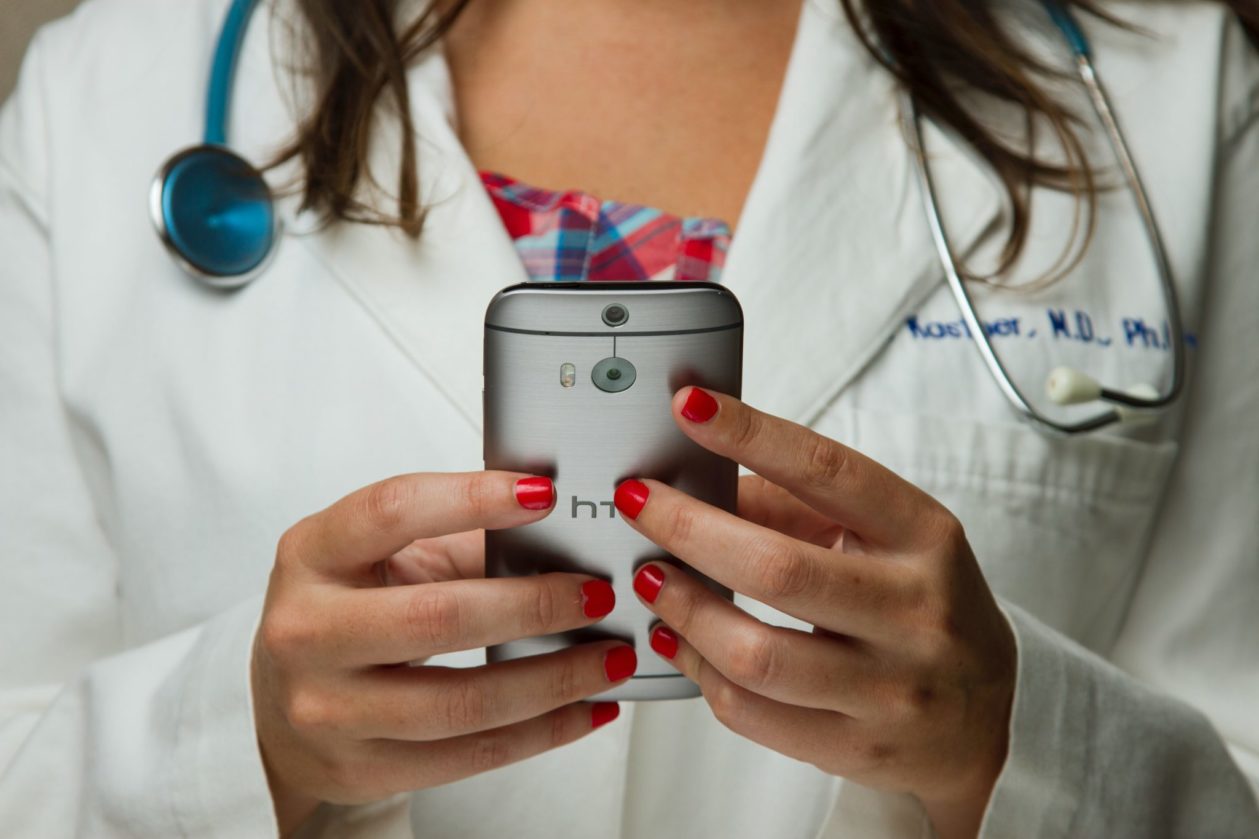When it comes to health disparities, women’s health innovation holds the potential to break down some major barriers. Today, health care products and services for women account for only 4 percent of the overall funding for health care research and development, while 85 percent of modern moms say they don’t feel society really supports motherhood, according to recent surveys. Fortunately, femtech, a category of technology looking to empower women’s health, is hoping to address just that by creating technology that helps women take charge of their health and the care they receive. Even further, it’s estimated that investments and VC funding in femtech will reach $9 billion by 2024.
During Worth’s latest session of The Next Normal, held during World Breastfeeding Week, we were joined by Simmone Taitt, founder and CEO of Poppy Seed Health; Debra Bass CMO and president of Nuvo Group America; Elizabeth Bailey, managing director of Rhia Ventures; and Kathleen Entwistle, private wealth advisor at Morgan Stanley Private Wealth Management for a discussion on the future of femtech, starting with the rise of telehealth due to the pandemic and its impact on the women’s health care space.

“What’s intriguing to me is telehealth was available to most before but utilized by almost no one,” Bass said. “And suddenly the pandemic hits, and then there’s [a] world of pregnancy and everywhere people are being asked to stay home and especially pregnant women are being asked to stay home who can’t go unchecked. It’s not like elective surgery where I could defer it for six months. So it’s been a forcing mechanism for telehealth adoption broadly, and in our case in pregnancy management, and what we’ve seen is adoption of televisits where now everyone could have a consult like this, but really there’s an acute need for deeper tools, like remote monitoring platforms, to have more meaningful remote visits.”
“So, from our perspective, we’re now in this situation of having demand now ahead of supply, but it’s very exciting,” Bass continued. “From where I sit, I’m in this to empower women with better tools and better knowledge and better footing in what’s largely been a very paternalistic health care system. So, it’s exciting to see the tailwinds for adoption and acceptance.”
Taitt echoes this notion that the pandemic has actually allowed maternal health care to power forward.
“I didn’t know a year ago that a global pandemic would put maternal health care really in the spotlight, where it should have been a long time ago,” she said. “But specifically, as it relates to accessibility and equitability in our very broken health care system for maternal health care. So, for Poppy Seed Health, we’ve grown overnight about 140 percent, and that was just within the 30 days or so after we were all really forced into quarantine. And what we were really dealing with and seeing and supporting was both sides of who we serve for Poppy Seed Health. So, we have the pregnant and postpartum mama and that’s our member, but we also have our suppliers, our advocates, the doulas, the midwives, the nurses, specifically the doulas, who lost their contracts and their livelihood. We very quickly had to go into action to figure out how to onboard as many as possible where we are in our business and support that side as well. So, we saw major growth, but we had to have the growth to support what was actually happening as an extension outside of Poppy Seed Health itself. It was a tsunami, these were not ripples and waves. It was truly a tsunami of need…As it related to maternal health care, emotional and mental health support and going to one place for it, we found ourselves to be the only ones in the landscape.”

Apart from offering mental health support, Poppy Seed Health also offers a solution for women giving birth on Medicaid. Medicaid births account for 46 percent of all births in the U.S., and what’s more, the CDC found that Black, American Indian and Alaskan Native women are up to three times more likely to die from pregnancy-related causes compared to white women. And that margin rises with age.
“When we think about what it means to be building a telehealth solution for equitability, for all birthing people, we absolutely put Medicaid into our business,” Taitt said. “It actually needled into the very fabric of Poppy Seed Health. We are a B Corp out of Delaware, which means that we put purpose and profit [as] the same priority. It gives us a great challenge to chase. And we’re very bold about that. And so, there are a lot of ways that you can support Medicaid women and you can support uninsured and undocumented women. And for us, it looks simply that we’re taking a dollar amount from every member every month. And we funnel that back into subsidy programs. We have partners, and those partners are clinical partners who are serving underserved women and Medicaid women. And so, although we are doing the most that we can right now, as we scale, so do the subsidy programs. And so does our ability to get telehealth and get Poppy Seed Health services to women that wouldn’t otherwise have this support during their pregnancy and postpartum periods. And very specifically, we know that working with advocates increase and improve health outcomes as it relates to your pregnancy and postpartum, but specifically as it relates to birth and…the staggering stats that we’re unfortunately, or maybe fortunately, finally paying closer attention to. And that is that Black and brown women in the U.S. are dying three to five times more than white women. And part of that is the implicit bias within the system. And then part of that is education and empowerment that needs to happen so that you can collaborate and also advocate for yourself.”
And when it comes to emerging femtech, what is so important is accessibility as well as affordability. Taitt mentions that a doula can cost up to $3,000 or $4,000 out-of-pocket. But services like hers make care much more affordable.
“I think everyone that’s entering the space of femtech, no matter how you’re thinking about it, or what product you have, if you are not thinking about equitability and affordability and accessibility, I just don’t know that it’s going to last very long because we have to start addressing what the burden is,” Taitt said. “And I know that it’s a very big problem to solve. It’s a huge challenge. I love that, Elizabeth is investing in femtech, and Kathy, you’re investing in femtech, and Debra, you’re leading a company that is helping with some of the burdens, but it’s a very big [issue], and we all need to be solving it.”
When it comes to the investment side of femtech, Bailey has made it her mission to serve the women’s health sector through her work. She gave some insight into what she looks for when investing in women’s health care companies.
“As an impact investor, we do screen for impact first,” she said. “And so, we look at accessibility, affordability, obviously dramatic improvement of quality of care and then anything that’s going to help with systemic change because the system is not working for everyone. And we are particularly interested in product services, innovations that have the potential to improve health outcomes for underserved communities, whether that’s women of color, Medicaid patients and low-income women. And so, as we’re looking at a new company, if we don’t think those products or services will ever reach underserved communities, that’s not the right fit for us, even if there’s, tremendous profit potential. What I think has been fascinating during this particular period of COVID is that access is now an issue for everyone. And I think it has sort of shined this really bright light on inequities but also shined the light on potential solutions around access for everyone. A couple of our portfolio companies in the contraceptive access space, as well as the maternal health or digital health space, those companies that have those digital solutions that can reach underserved patients, we’ve seen a huge increase in their business.”
“And so, I think while there have been lots of challenges during this time, I do feel like the acceleration, just as Simone and Debra have described, the acceleration for companies that are helping expand access has just created these wonderful sort of wins at the backs of entrepreneurs,” Bailey continued. “And I think…those companies that truly are focused on access for all will emerge as the winners because, we talked about the number…the percentage of births in this country that are Medicaid. You can’t ignore that market. So, you might have some early wins and some early successes, but ultimately you’re not going to be able to serve the broader market.”
To be able to further femtech and better women’s health care options, it starts by having more women in leadership positions and investing in these companies.
“I spent a lot of time thinking about why more venture money wasn’t being invested into women’s health companies,” Bailey said. “I think it is really important for women to be decision-makers at the investing table. And it’s not that there aren’t great male VCs. There’s certainly been a few brave souls [who] have invested in women’s health. But I think historically women have not been at the table. They’ve not been decision- makers at venture capital funds. And I think that is slowly starting to change, certainly not quickly enough.”
Having spent most of her career working in big corporate companies, Bass agrees that what needs to happen to further women’s health care opportunities is having more women seated at the table, making financial decisions.
“I do think it all starts with female leadership and having representation of women in the decision-making seat at the table,” Bass said. “So, which innovation am I going to invest in and why? And that’s inside a company that’s in the VC community, that’s in the banking community. And the other reality with women’s health, too, is it’s been pigeonholed as reproductive needs in many ways, menstruation through menopause, but really the health of women has been understudied broadly when you look at cardiovascular disease, when you look at orthopedics, when you look at chronic disease, so we need more representation of understanding women and improving the health of women through all levels and lenses. And that starts with female leadership. What I’ve been encouraged about the two years that I’ve been in this job is this community of people, like Elizabeth and Simmone and many others, that are about women for women’s health, because…there’s power in numbers, and we’re elevating the profile, the prospect and the opportunity for women’s health. So, I’m very optimistic about what’s to come because of people like us around the table.”







